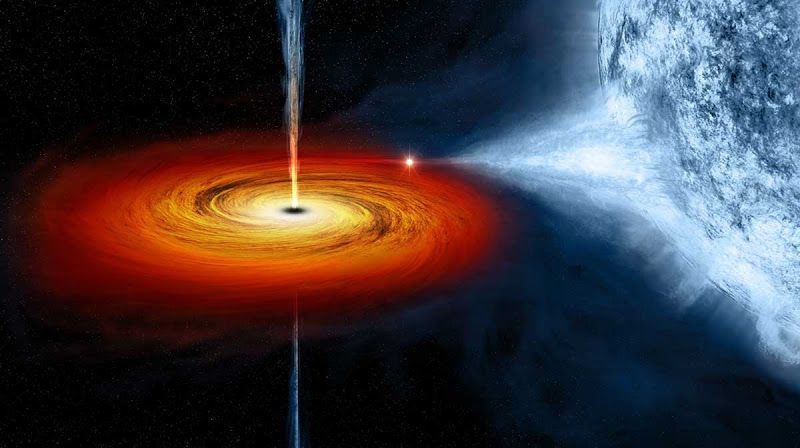
[ad_1]
Translation – Asma Sobhi
“Black holes” are one of the most frequently searched expressions in our universe, and there is a fascination with the idea of a region of space that has a very strong gravitational force, nothing that can escape. his deadly grip, not even a piece of light, and in fact, a lot. We think we know black holes are just myths.
Myth 1: All black holes are black
As the Event Horizon Telescope has shown, light can be detected near the event horizon of a black hole, and this is the boundary between natural space and space affected by the gravity of the hole. black, from which she cannot escape.
Some of this light comes from the black hole’s accretion disk, which is a flat, pie-shaped structure made up of dust, gas, and other debris, and the friction continually moves material from the disk inward toward the event horizon, and light also comes from the jet streams that push the material outward along the poles. North and south of the disc.
Myth 2: All black holes are roughly the same size
Black holes actually have many different sizes determined by their mass. Small black holes are typically the result of a relatively short and violent collapse of a star, and recent work indicates that intermediate black holes are found in them. nuclei of some active galaxies, and on the other hand, there are supermassive black holes in the center. Almost all galaxies.
“There is a direct relationship between the start of supermassive black holes and the start of their corresponding galaxy, and this strongly indicates that the two were born around the same time and slowly grew together over billions of years,” said Dr Dan Evans, an astrophysicist at NASA headquarters.
Myth 3: If you get close to a black hole, its super attractive gravity will pull you towards its center
It turns out that you can suddenly approach a black hole, and if you approach a black hole the mass of which is equal to our sun, for example, you can approach it for tens of kilometers, then imagine if we replace our sun with a black hole of the same mass, all the planets will continue to orbit around it, at the same speed and at the same distance. Like you do now.
Myth 4: Once you enter a black hole, nothing will come out
No, it turns out that radiation can escape from a black hole, and one of Stephen Hawking’s contributions was the theory that a black hole is not very dense in the sense of quantum mechanics, and the slow escape of what is now known as Hawking radiation, over time, would simply cause the black hole to evaporate.
The Event Horizon telescope image confirmed what Albert Einstein’s General Theory of Relativity predicted over 100 years ago – that the shape of a black hole is the shape of a full circle, and to As scientists learn more about the properties of this massive cosmic mystery we call a black hole, they will be able to drill deeper into it. Myths.


Source link